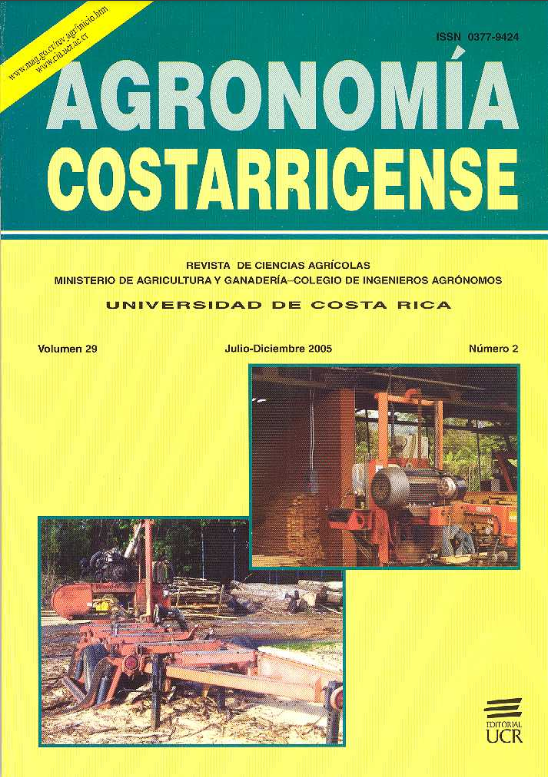Abstract
The objective of this study is to improve on the knowledge about nutrient extraction by components of above ground biomass of A. acuminata in plantations of 2 to 7 years of age growing on Typic Udivitrands (Landelina and Vista de Mar sites) end Entic Udivitrands (Matinilla site). The concentration of all the elements changes among the different alders’ tissues; the contents of N, P, Mg and S decreased in the order: leaves>secondary branches>main branches>trunk. The concentration of K, Cu and Mn diminished as mentioned above, except that the main branches and the trunk showed similar concentrations. The B and the Ca concentrations were larger in the leaves and secondary branches, but their concentrations did not differ significantly; smaller quantities of B and the Ca were found in the main branches and the trunk. Considering together data from trees of all tissues studied and of plantation ages, the concentration percentage of the macronutrients in alder descended in the order: N>K>Ca>P≈Mg>S. The concentration of Zn was larger in the secondary branches than in the leaves and diminished in the order: secondary branches>leaves>main branches>trunk. The content of Fe in the leaves was larger than the found in other tissues of the above biomass, among which there were no differences. The abundance of the micronutrients, descended in the order: Fe>Zn>Mn>Cu>B, despite the tissue type or the age of the plantation. Up to the second year age of the plantation, both crown and trunk biomasses are similar. After age 4, growth of the trunk becomes dominant and nutrient accumulation in this component of the biomass becomes more abundant, followed by the main branches, the leaves and the secondary
branches. The total extraction of nutrients in the plantations of A. acuminata followed the order of N>K>Ca>P>Mg>S and of Fe>Zn>Mn>Cu>B.
##plugins.facebook.comentarios##

This work is licensed under a Creative Commons Attribution-NonCommercial-NoDerivatives 4.0 International License.
Copyright (c) 2024 Agronomía Costarricense


